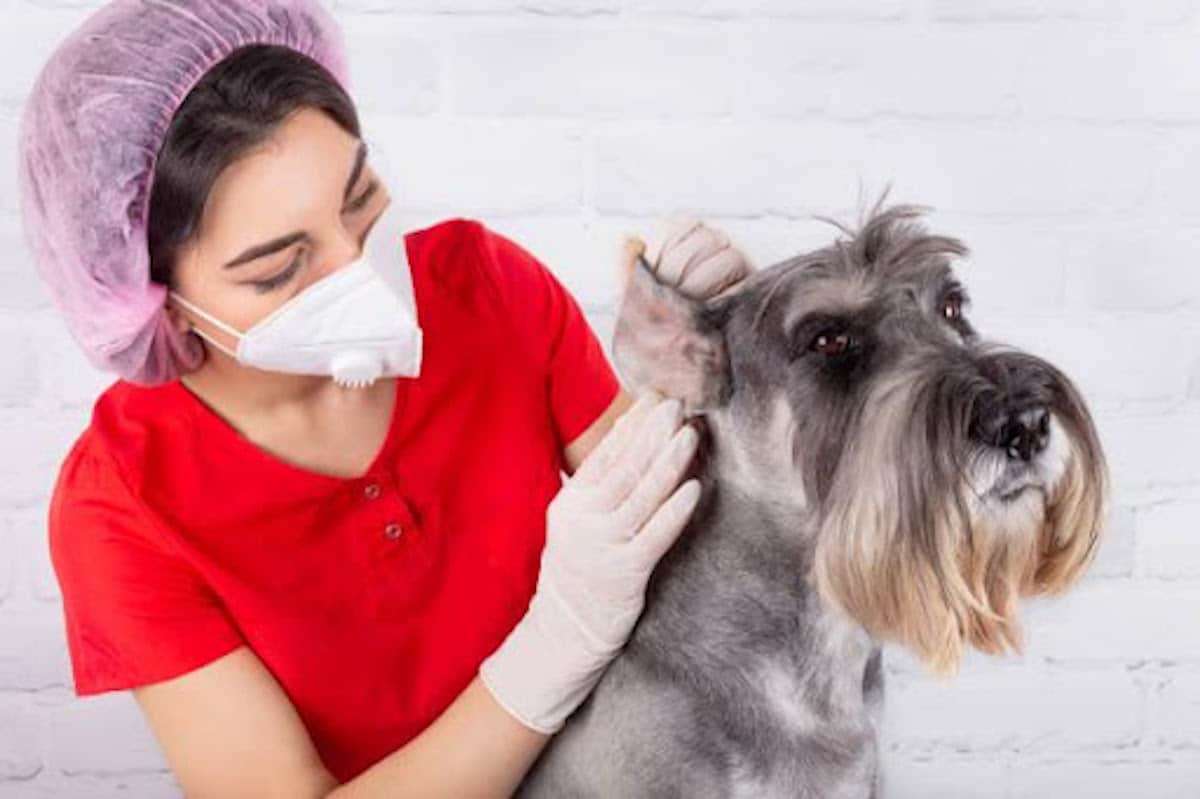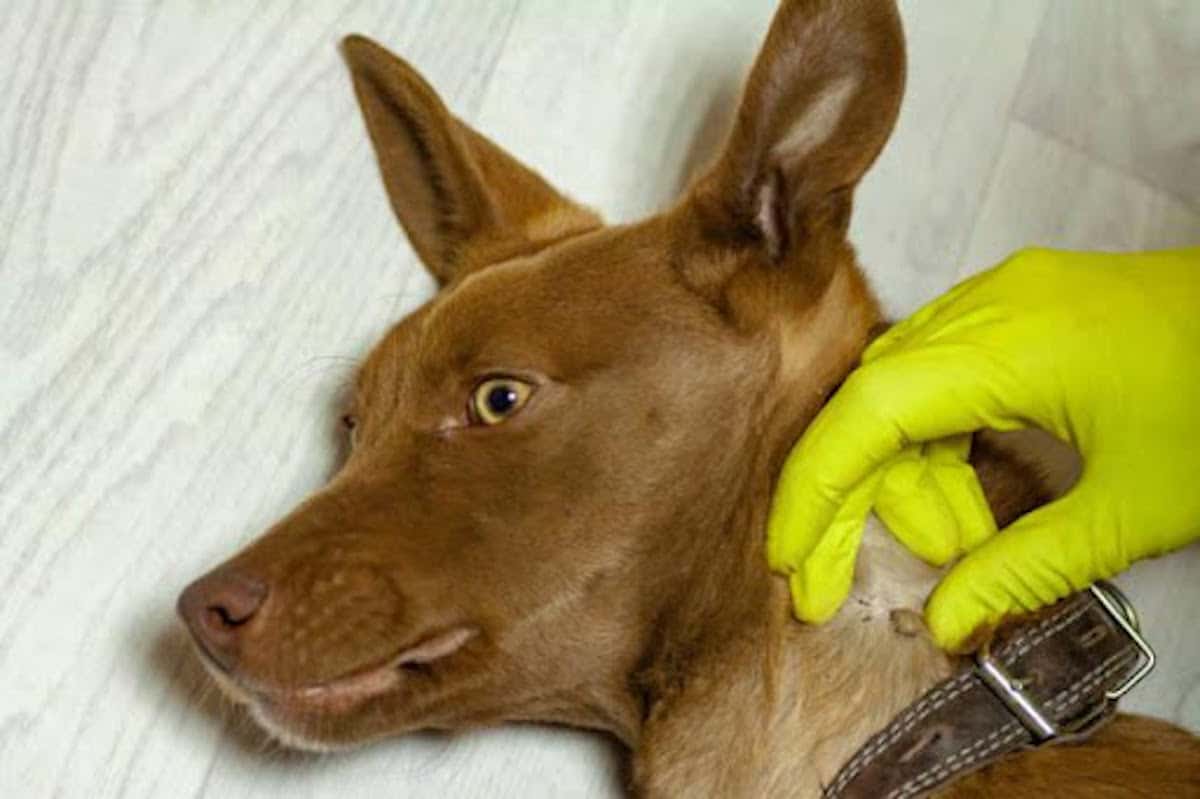Table of Contents
Pets are great family companions, but sometimes they bring unwanted guests. It’s common for even the best-cared-for pets to become infested with parasites. When this happens, it’s essential to know how to get rid of fleas from your dog safely and permanently.
If dog fleas are a nuisance, what difference does it make to humans? Recognizing and treating the problem quickly is the best way to avoid an infestation that could make your home a home for the dreaded flea. That’s why Vet and Tech have put together this guide on the best ways to control fleas in dogs effectively and provide animal health solutions. Below, you’ll find Vet tech learning to ensure your pet’s and your family’s health and well-being without too much trouble.
But how do you know if your dog has fleas?
Itching, biting, and licking are the most obvious signs. However, here are five tips from expert Vet and Tech to help you determine if your dog has fleas:
- Gently pull on the hair with your finger, and you’ll see the fleas running in the opposite direction to hide. You will recognize them by their dark brown color.
- Bathe the dog, close the drain, and look carefully at the water. If you see black spots in the water, you may have fleas.
- Carefully examine your dog’s coat with a special comb. Your dog may have fleas if you find brown, flat, oval creatures that move quickly. They are most often found at the base of the ears and on the back.
- They may also leave numerous small black spots of dirt. If you find any, place them on a white cloth and wait. If it is flea droppings, tiny red dots will appear.
- If you find a flea, pick it up with your hand and crush it with your fingertips. Fleas are usually tough to squash. If the flea squashes quickly, it is probably not a flea.
How to get rid of fleas on dogs?
Fleas on dogs are common, but getting rid of them quickly is essential to avoid more severe problems. Veterinary healthcare is the most important thing that pet owners must do. Here are step-by-step instructions from the Vet and tech on how to get rid of fleas on dogs.
You will need the following:
- flea comb
- Hair dryer
- sprayer
- Water
- Sodium bicarbonate
- salt
- Apple vinegar
- Shampoo
1. Prepare a vinegar solution
Start by preparing a solution of 200 ml of apple cider vinegar, ½ teaspoon of salt, ½ teaspoon of baking soda, and 3 tablespoons of warm water.
Prepare the solution in a large container, as the original foam may be disturbed.
2. Apply the solution
Place the prepared solution in a spray bottle and spray it onto the dog’s coat in the same way you would normally shampoo. To avoid any discomfort to your pet, be sure to avoid the eyes, muzzle, and ears.
3. Leave the solution on
After applying the solution, leave it on for 5 minutes. During this time, please keep your dog close to you to prevent him from licking his coat or rubbing it dry on the furniture.
4. Rinse the coat
Rinse the dog’s coat, focusing on the eyes, corners of the mouth, and ears. Moreover, rinse several times if necessary. Make sure no residue of the applied solution remains.
5. Dry the coat
Finally, carefully dry the dog’s coat with hot or cold air from a hair dryer. Make sure the air from the hair dryer is not too hot. However, for the sake of your pet’s health, you must have the patience to dry the coat thoroughly while you run the hair dryer.
6. Visit the Veterinarian
If this situation prolongs and no solution comes up, it’s better to visit your nearest veterinarian to make your pet flea-free.

Learn also How to get rid of fleas on puppies
Controlling fleas on puppies differs from for more prominent or less sensitive animals. If you want to know how to get rid of fleas on puppies, Vet and tech have prepared a step-by-step guide. See below.
1. Take a bath to soften the coat
Start with a warm water bath and use shampoo or other shampoo suitable for puppies’ sensitive skin.
2. Groom the coat with a flea comb
After bathing the puppy, while his coat is still wet, comb him with a flea comb to clean him.
Do this calmly and gently to make sure the flea eggs are removed. Again, patience is essential, as leaving pests behind allows them to reproduce again.
3. Controlling the fleas
The next step is to ensure the fleas are dead to prevent them from spreading. Crush the fleas with your fingers or drop them into a bucket of boiling water to kill them.
4. Dry the fur
Once flea control is complete, thoroughly dry your dog using the hot or cold setting on the hair dryer. Drying on the low setting may take longer, but it will keep your pet healthier (especially for puppies).
Wait until the coat has cooled slightly before drying your dog, then check for shedding. It’s essential that the dog is completely dry to avoid infection.
Causes of fleas in dogs according to Vet and Tech
Fleas not only bother you and especially your furry family members, but they can also cause fleas (spread by feral cats and, in some cases, by wild animals in the yard), cat fleas rickettsial disease, and allergic dermatitis.
Getting rid of a flea infestation can be difficult. However, your veterinarian should be able to advise you on ways to reduce the risk of flea infestation.
- Squirrels, mice, cats, and dogs can drop fleas on the ground, which can then jump onto your pet.
- Flea eggs fall quickly to the house floor and can infect everyone in the family.
- When rats enter the house, they can bring fleas with them,
- Fleas can settle and hatch on furniture and bedding; the flea life cycle can continue if your dog enters.
- All life cycles (eggs, larvae, cocoons, and fleas) should be removed from the home environment.
- Can fleas live in kennels?
- Up to 95% of fleas live inside pets, so home treatments should be done carefully.
How can you keep your environment flea-free?
According to Vet and Tech, here are some preventative measures dog and cat owners should take in their environment, especially if they notice a flea infestation.
- Protect your dog with flea baths, sprays, and collars, especially if you walk your dog regularly,
- Long-lasting topical products are also recommended. Some brands keep fleas off your pet for up to three months,
- Regularly disinfect your pet’s belongings, such as beds and blankets.
- Regularly trim your puppy’s coat to keep it short.
Cats should be kept outdoors, as they are exposed to many other dangers besides fleas. Veterinary care is the most vital aspect. For example, they can run, get poisoned, and contract diseases such as toxoplasmosis and sporotrichosis (which is almost epidemic and can be transmitted to humans).
To Wrap Up
You can see that getting rid of fleas on pets takes work. Some care is necessary. The best thing to do is to prevent them. If you follow vet and tech advice, you can control the parasites and avoid infestations. Regular checks are essential to detect and solve problems at an early stage. Want to learn about animal diseases? VetandTech is the platform to get the most updated knowledge and animal health solutions.
Frequently Asked Questions (FAQs)
Q: How did I get infected with fleas?
A: Fleas can be introduced into the home in several ways, the most common being through pets such as dogs and cats. Outdoors, dogs, and cats often catch fleas and bring them into the house. Fleas begin to reproduce inside the house, and their numbers increase rapidly.
Q. What do fleas hate?
- Soap or baking soda: Put soap or baking soda in a water bowl and place it in a container near a light, out of reach of your pet. Thirsty fleas will be attracted to the light and jump into the container, where they will drown.
Q. Can my puppy get fleas on the grass?
- Yes, fleas on the grass can infect your dog or puppy. Fleas usually jump on the animal, feed on its blood, and hop back on once they are done eating and land on the grass. Unfortunately, fleas can also be introduced into the home through clothing and shoes. So, protecting your pets is essential, even if they don’t leave the yard.


